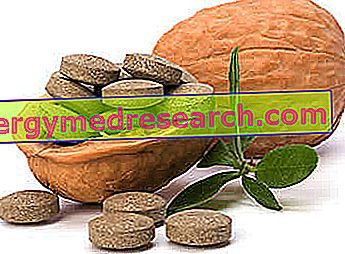Generality
Cooked ham is a preserved meat, more precisely a cooked sausage NOT stuffed and partially covered with rind.
The cooked ham is composed of the boneless thigh "real" of the pig ( S. scrofa domesticus ), therefore, in its production other parts of the animal are not used. NB . Often cooked ham is replaced by a very similar product, but significantly less valuable: the cooked pork shoulder .

The production of cooked ham involves some essential phases: slaughtering of the pig, processing of the hind limb (cutting, degreasing, boning - but not always - massaging, etc.), steaming and packaging.
Cooked ham is not "all the same"; leaving aside the variability of local recipes (which would require a paragraph each), cooked ham is officially differentiated into three very distinct categories. To say it is the "Ministry of Productive Activities", which with the Decree of September 21st 2005 (GU n. 231 of October 4th 2005) regulates the production and sale of cooked ham in: high quality cooked ham, selected cooked ham and cooked ham (as can be seen, the cooked shoulder is NOT included in the specification of the cured meat in question).
Background
Cooked ham is a food with ancient origins, dating back even to ancient Rome, where there is a trace of the recipes for preparing pork. Indeed, despite being a salami, cooked ham is nothing more than a "big roast"; its discovery is therefore attributable to the Latins who, in the northern regions of the empire, tried to facilitate the cooking of the roasted pork leg by boiling it in water and aromas. It is not to be excluded that the legionaries have acquired the first notions on the preparation of cooked ham from roosters, from the Longobards or from other barbarian populations gradually absorbed in the empire; not surprisingly, the regions that produce the best qualities of cooked ham (given the greater tradition) are: Friuli Venezia Giulia, Lombardy, Piedmont, Liguria and Emilia-Romagna.
Production
The production of cooked ham occurs through the succession of different phases that are totally "inalienable" and irreplaceable. From the beginning, the pork leg is deboned and matured for a few days at a temperature of 6-8 ° C; salting follows, which in cooked ham DOES NOT apply from the outside on the surface of the meat (as is the case for most whole cured meats), but rather through injections of infra-muscle brine. This procedure is called churning and is considered as a real massage; the churning of cooked ham can last up to 70 hours. The cooking (70 ° C) follows, which takes place by steam but with the use of a special mold; then the cooling-storage, in a cold room, at a temperature of almost 0 ° C. At this point, the cooked ham undergoes a real cleansing which regularizes its shape and carefully cleans its surface (even the rind); the last step is the packaging and pasteurization of cooked ham which considerably prolongs its preservation (provided that they comply with the requirements: refrigeration at + 4 ° C and integrity of the vacuum).
The production of cooked ham also varies according to local tradition, therefore, the salami packaging methods are as many as the places that have integrated it into the native culinary tradition.
Additives
Cooked ham, being a preserved meat, cannot ignore the addition of preservative molecules; among these, some are purely natural (such as brine salt), while others are registered in the list of food additives. The most used preservatives in cooked ham are nitrites and nitrates (E240-E259), but there are also: glutamates (E620-629), polyphosphates (E450-459), powdered milk and / or caseinates, and ascorbates (E300-E309 ).
Nutritional characteristics
Cooked ham has a remarkable "hygienic advantage" compared to raw cured meats; in fact, (being cooked) its consumption is granted even during pregnancy (since there is no risk of parasitic infestation or bacterial food toxin). However, let us remember that cooked ham provides a fair amount of nitrates and nitrites, molecules that - if introduced excessively - are potentially responsible for the release of toxic nitrosamines (involved in the carcinogenic processes of the stomach).
Cooked ham is a preserved meat that contains significant amounts of sodium chloride (cooking salt) and potentially allergenic additives; for these two characteristics, the cooked ham should be consumed with particular moderation by subjects suffering from hypertension (since the excess sodium worsens the pathological condition) and even avoided by those sensitive to certain molecules, such as lactose intolerant or allergy sufferers with milk proteins.
Cooked ham provides an energy quantity that varies according to the amount of private fat or kept during scalping; the intact one is sufficiently caloric, while the one without visible fat is definitely more similar to a cut of lean meat. Both have good weights of proteins with high biological value, lipids that tend to be saturated, cholesterol and traces of simple carbohydrates (made from the lactose of powdered milk).
From the saline point of view, as mentioned above, cooked ham is rich in added salt, therefore sodium; there is also no lack of potassium, iron and phosphorus. As far as vitamins are concerned, cooked ham provides good amounts of those of group B (thiamine, riboflavin and niacin).
Nutritional composition of cooked ham - Reference values of the INRAN Food Composition Tables
|
| ||||||||||||||||||||||||||||||||||||||||||||||||||||||||||||||||||||||||||||||||||||||||||||||||||||||||||||||||||||||||||||||||||||||||||||||||||||||





